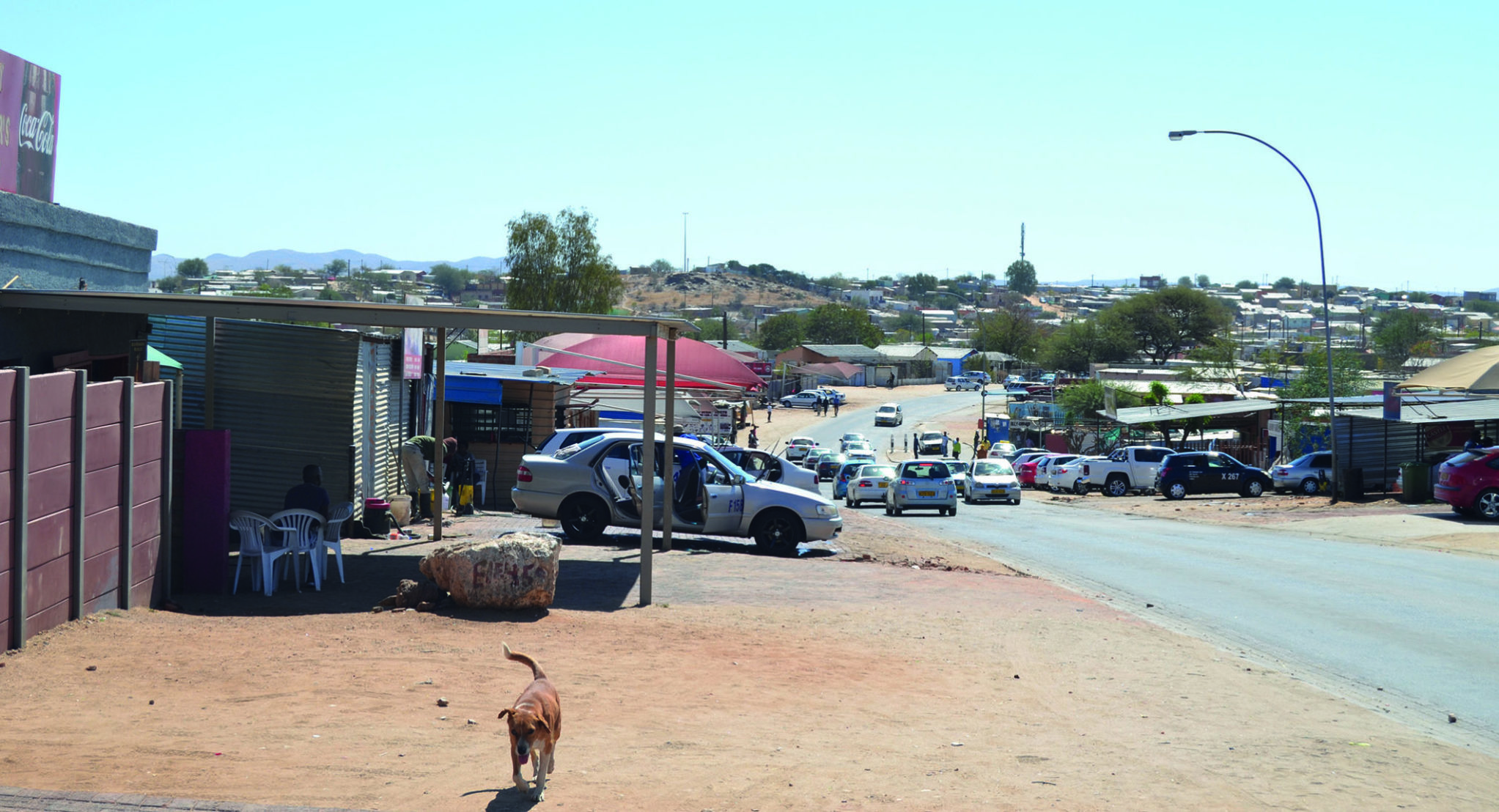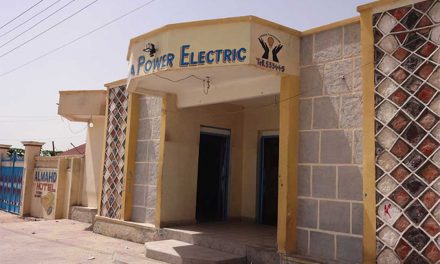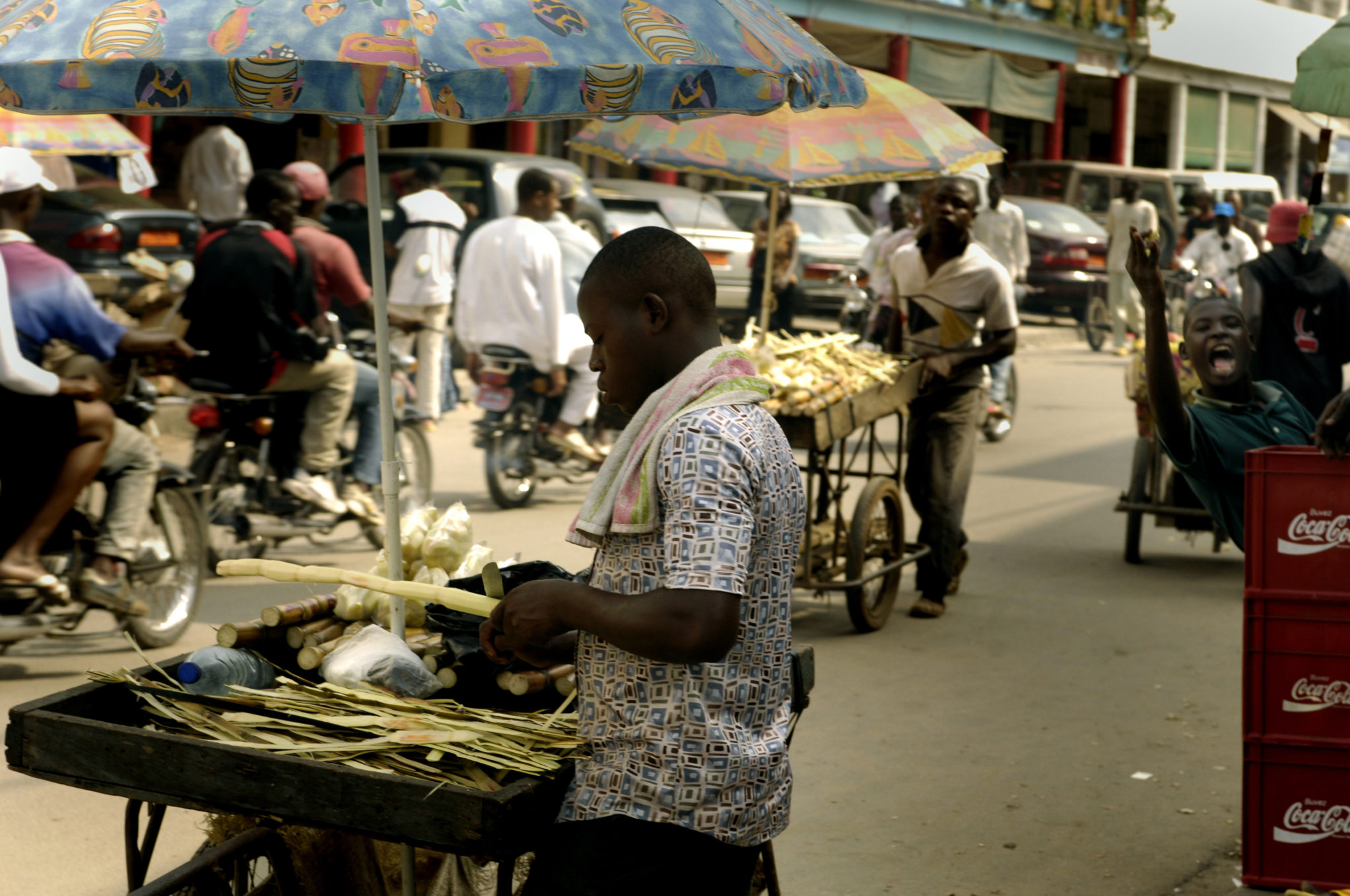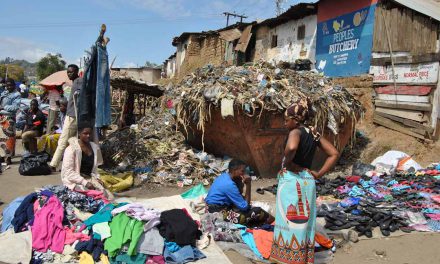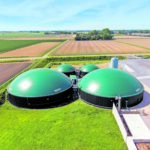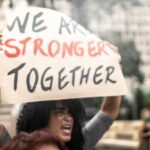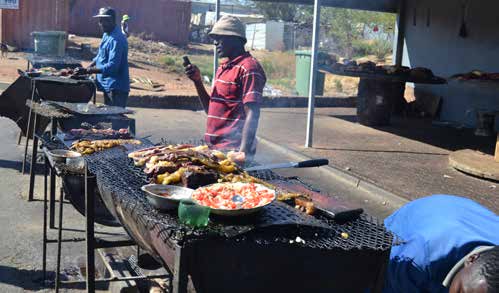
Kapano stands on Eveline Street, Windhoek, Namibia. Image: Sustainable Livelihoods Foundation
A developing leisure economy is changing a downtown area in Namibia for the better
South Africa’s cities have several streets that are well known for their leisure businesses, entertainment and nightlife, among them Long Street in Cape Town and 7th Street in Melville, Johannesburg.
Similar developments, though informal, are well known in the townships, with shebeens, bars and games venues. These activities form the basis of a range of secondary informal businesses, including restaurants, street-food vending, entertainment, music, car guarding and hair salons.
However, while such streets, or sometimes whole districts, have been viewed as offering transformative possibilities for employment and incomes in inner cities, those in townships – especially those involving alcohol-related activities – have been viewed as leading to a range of social ills, and have been faced with restrictive policies and legislation. Informal leisure economies in the townships are not thought to have the same potential for economic, social or spatial transformation as inner-city leisure economies.
Leisure economy activities include drinking, eating, listening to music, dancing, playing pool or arcade games and watching performances. People’s pursuit of these leisure activities gives rise to bars, restaurants, night clubs, cafés and theatres, which are usually most active at night.
Typically, leisure economies are associated with cities in the global North, where an upwardly mobile, creative class has created demand for leisure activities. High streets lined with bars, cafés and restaurants become leisure destinations, and have been associated with the regeneration of inner cities, stimulating economic growth and the erosion of old patterns of spatial exclusion.
For Sustainable Livelihoods Foundation (SLF), I recently carried out research across nine South African townships with a view to understanding the country’s informal economy, of which the informal leisure economy is a part. The main aim of the research was to establish how the informal economy – and hence the informal leisure economy – are, or should be, managed from a socio-economic perspective.
An indication of their economic importance is reflected in the results of previous studies undertaken by SLF: leisure-economy related micro enterprises comprise about 25% of all township micro-enterpriseactivities. I studied Eveline Street in Katutura, Windhoek, which provides an example of the results that flow from a more positive policy approach to township leisure economies than those implemented in South Africa.
In 2006, the City of Windhoek decided to rezone land along several high streets in Katutura, in Windhoek’s outlying north-western suburbs, which consist of several formal and informal township settlements. The aim was to enable shebeens along those streets to trade legitimately and to become part of the formal economy. Eveline Street is the first of the high streets to be rezoned. I wanted to understand the scope and scale of the micro-enterprises along the street, the inter-connections between them, and the influence of the high street in creating and supporting new business opportunities.
The data gathered included four components. The first was a business census of all activities on the high street, using a small-area census approach, which the researcher has pioneered in South Africa. This enabled comparison of the researcher’s business census data with historical data from the City of Windhoek on enterprise activities, allowing for a comparison of micro-enterprise distribution in Eveline Street across time.
The second component of the research was an enterprise survey of each bar, using a questionnaire. The survey sought to obtain data on the leisure offering within the venue, its business links to other enterprises along the high street, each bar’s operating hours, the employment opportunities created, as well as the distinguishing characteristics of the social environment within the bar and adjacent public space.
The third component entailed a spatial and architectural examination of building structures, a documentation of the infrastructure available on the street and an analysis of the relationship between public and private spaces on the street, particularly in light of business activities. The fourth component used ethnographic methods to research the experiences of employees and entrepreneurs working in different business sectors.
The field research, which included the business census, the survey and interviews, took place over five days in August 2016 and two days in April 2017. The following months were dedicated to analysing and collating the rich data collected. The research revealed that both economic growth and economic diversification had occurred along Eveline Street. There had been a clear growth of economic activity, with the number of businesses having doubled between 2008 and 2016, from 133 to 270. This included an increase in the number of bars, from 61 to 80.
Yet, even with this increase, the number of bars as a proportion of all the enterprises on the street had decreased to 29%, from 45%. Hair salons, house shops, print shops, takeaway food outlets and vehicle services – many types of business not present on Eveline Street in 2008 – now made up 37% of the overall economy of the street. The greater range of businesses operating along the street indicated both a net increase in economic activity and a diversification and maturation of its economy.
The research showed two key drivers of this economic growth and diversification. One was that the street’s developing leisure economy had encouraged business owners to acquire licences and formalise. This was because the street’s bars, restaurants, casinos and businesses related to leisure, including takeaways, street braais and hair salons, were legally allowed to trade.
The other driver of economic growth and diversification was public transport, specifically the tens of thousands of sedan taxis that operate throughout Windhoek, facilitating transport to and from Eveline Street. The combination of leisure and public transport has created the kind of development associated with the objectives of transit-oriented development (TOD). These include: densification and diversification of land use, including a mix of business and residential properties; the re-orientation of buildings to facilitate public use; and improvements in the quality of public areas – the street, its pavements and public bars.
In South Africa, job growth in the formal economy has stagnated over the past 10 years. Unemployment stands at roughly 25% of the labour force, with unemployment greatest in marginalised communities, such as townships. According to the Quarterly Labour Force Survey, around 2.5 million South Africans work in informal micro-enterprises. That figure has not changed substantially in 10 years.
In South Africa, clearly, the informal economy represents a means of livelihood for people who are not employed in the formal economy. A similar situation presents itself in Namibia. The informal economy is, therefore, an important space for employment opportunities when these are unavailable in the formal economy. A more development-driven and supportive approach to the informal economy could result in its overall growth.
Moreover, a development-driven approach to the informal economy could improve the quality of the jobs and working conditions in that sector, as well as facilitate the formalisation of informal micro-enterprises. This would bring about greater opportunity, security, and sustainability for people whose livelihoods depend on the informal economy.
One of SLF’s core goals in undertaking this research was to inform policy makers and state authorities, thus enabling them to make policies that foster inclusive economic growth and development. In addition to increased business activity and diversity along Eveline Street, inclusive economic growth and development is evidenced, firstly, by a diversification of business ownership; a proportionately greater number of businesses in the street are owned independently from bars.
There has also been an increase in the number of licensed businesses in the street. Only 11 businesses were licensed in 2008, yet 64 were licensed in 2012. There was also an increase in the value of property on the street. One bar, for example, was on the property market in January 2016 for the equivalent of R880,000, while anecdotal evidence suggests that properties on the street were selling for as much as R1 million in 2017.
The SLF study concluded that to develop or improve policies to achieve similar results and enhance economic growth in South African townships, the following key learnings were needed:
- secure property rights;
- land-use zoning to permit diverse business activities (secure business rights);
- policy endorsement to allow the formalisation and regulation of liquor trade;
- policy endorsement of sedan taxi operations and action to reduce obstacles to public transport permits;
- a focus on transit-oriented streets;
- diverse land-use ownership;
- a wide street layout to accommodate off-street parking and social interaction;
- public investment in street lighting, traffic calming and safety controls.
In addition to using this research to better inform economic development policies, our hope is that this research will stimulate a broader societal re-imagining of the transformative potential of the leisure economy in township contexts. Pervasive, negative perceptions of the informal leisure economy, and of informality more broadly, are part of the rationale for a social and political system that supports systemic economic exclusion. Changing attitudes towards informality can be part of changing this system.
The full research report, Transformative Leisure Economies, is available at www. livelihoods.org.za.
Caitlin Tonkin has a master's degree from the University of Cape Town and was a social researcher and analyst with the Sustainable Livelihoods Foundation until July 2017. Caitlin was involved in a land-use study of informal businesses in Katatura, Namibia and also various economic research programmes based in the township economy.

